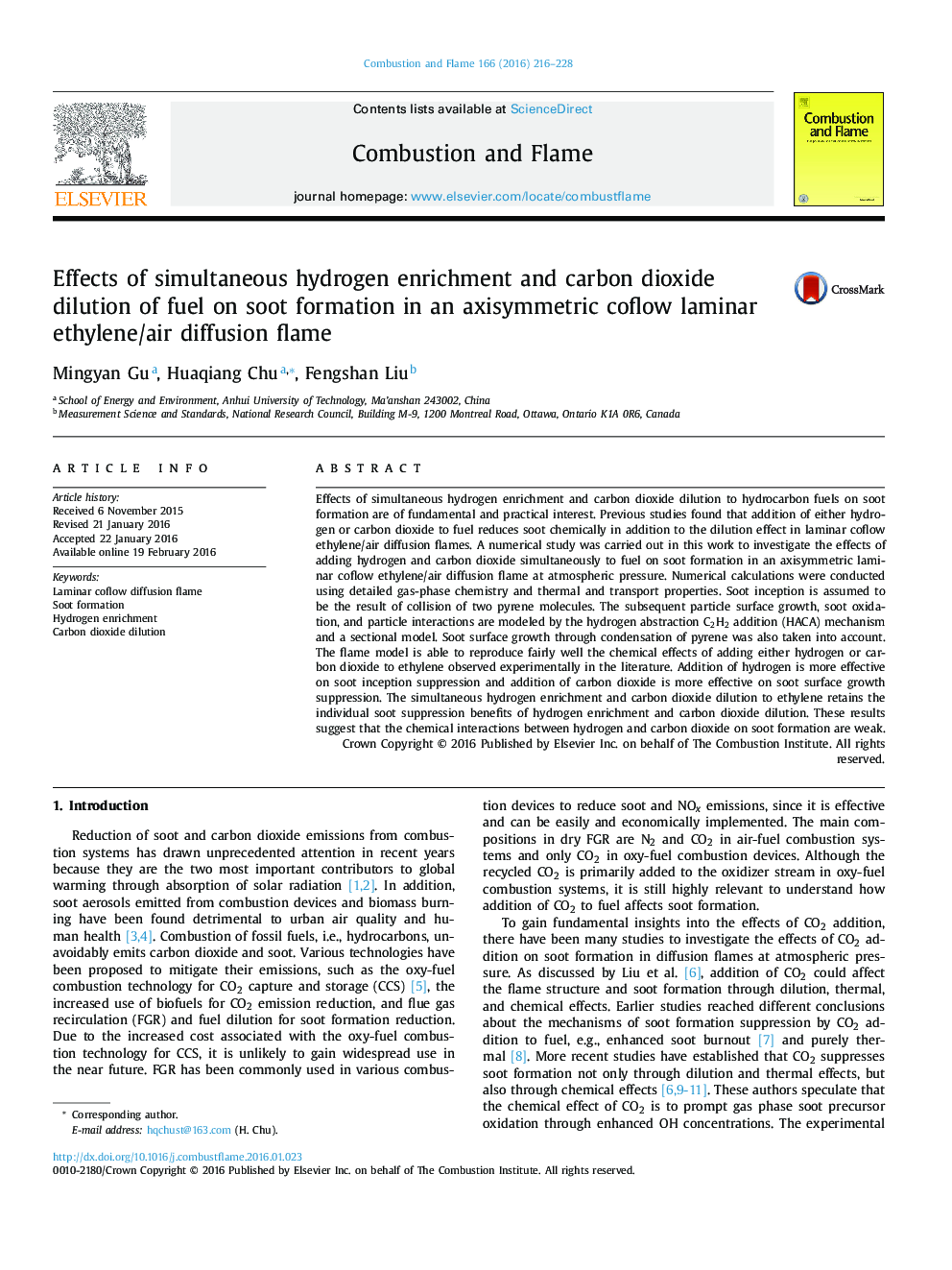| Article ID | Journal | Published Year | Pages | File Type |
|---|---|---|---|---|
| 168536 | Combustion and Flame | 2016 | 13 Pages |
Effects of simultaneous hydrogen enrichment and carbon dioxide dilution to hydrocarbon fuels on soot formation are of fundamental and practical interest. Previous studies found that addition of either hydrogen or carbon dioxide to fuel reduces soot chemically in addition to the dilution effect in laminar coflow ethylene/air diffusion flames. A numerical study was carried out in this work to investigate the effects of adding hydrogen and carbon dioxide simultaneously to fuel on soot formation in an axisymmetric laminar coflow ethylene/air diffusion flame at atmospheric pressure. Numerical calculations were conducted using detailed gas-phase chemistry and thermal and transport properties. Soot inception is assumed to be the result of collision of two pyrene molecules. The subsequent particle surface growth, soot oxidation, and particle interactions are modeled by the hydrogen abstraction C2H2 addition (HACA) mechanism and a sectional model. Soot surface growth through condensation of pyrene was also taken into account. The flame model is able to reproduce fairly well the chemical effects of adding either hydrogen or carbon dioxide to ethylene observed experimentally in the literature. Addition of hydrogen is more effective on soot inception suppression and addition of carbon dioxide is more effective on soot surface growth suppression. The simultaneous hydrogen enrichment and carbon dioxide dilution to ethylene retains the individual soot suppression benefits of hydrogen enrichment and carbon dioxide dilution. These results suggest that the chemical interactions between hydrogen and carbon dioxide on soot formation are weak.
